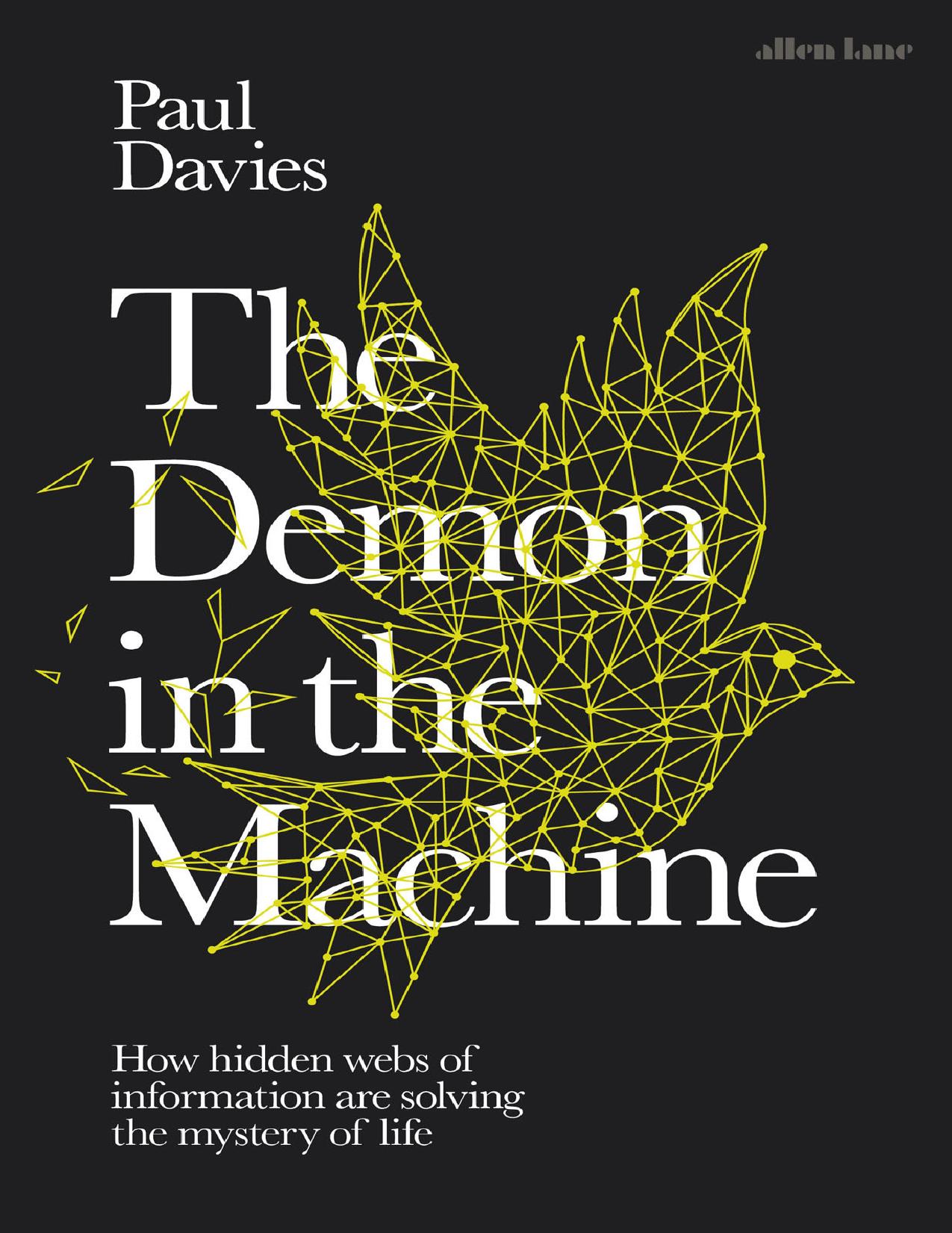The Demon in the Machine by Paul Davies

Author:Paul Davies
Language: eng
Format: epub, pdf
ISBN: 9780241309605
Publisher: Penguin Books Ltd
Published: 2018-11-30T16:00:00+00:00
DEMONS IN THE GENES
Surprising though adaptive mutations may be, they still imply that genomes are the passive victims of randomly inflicted externally generated blows or blunders, albeit with rigged odds. It’s still a chancey business. But suppose cells in trouble didn’t have to rely on external forces at all to cause mutations? What if they could actively manipulate their own genomes?
Actually, it is clear that they do. Sexual reproduction involves several slicing-and-dicing genomic reconfigurations, some random, some supervised. Many intermingling methods are out there, each of which involves cells shuffling their own DNA in a carefully arranged manner. And sex isn’t the only example. Correcting the errors that occur during DNA replication requires another set of genomic management operations. Most of the primary damage to DNA, for example by radiation or thermal disruption, never makes it to the daughter cells because it is repaired first. Human DNA would suffer devastating mutational damage, estimated at an overall 1 per cent copying error rate per generation, without all the in-house, high-tech proofreading, editing and error correcting which reduces the net mutation rate to an incredible one in 10 billion. So cells are able to monitor and actively edit their own genomes to a high degree of fidelity in an attempt to maintain the status quo.
But now we encounter a fascinating question: can cells actively edit their genomes to change the status quo? Decades before the work of Cairns and Rosenberg this question was investigated in a series of remarkable experiments by the distinguished botanist and cell biologist Barbara McClintock. Starting in her student days in the 1920s, she experimented with maize plants and established many of the basic properties of chromosome structure and organization we know today, for which she subsequently received a Nobel Prize in Physiology or Medicine – the first woman to win the prize unshared in that category. With the help of a basic microscope, McClintock looked to see what happened to the chromosomes of the maize plants when they were exposed to X-rays. What she reported caused such a ballyhoo and attracted so much scepticism that in 1953 she felt moved to stop publishing her data. What was uncontentious were her observations that chromosomes break into fragments when irradiated. But the big surprise was the fact that the pieces could rejoin again, often in novel arrangements. Humpty-dumpty could be reassembled in a baroque sort of way. Chromosome reorganization writ large might seem lethal, and it often was. But it was not always so: in some cases, the mutant plants went on to replicate their grossly modified genomes. Crucially, McClintock found that the large-scale mutations were far from random; it appeared that the maize cells had a contingency plan for the day their genomes were smashed. Even more amazingly, if the plants were stressed, for example by infection or mechanical damage, spontaneous chromosome breakage could occur without the benefit of X-ray disruption; the broken ends were rejoined after the chromosome replicated. In 1948 McClintock made her most startling discovery of all.
Download
This site does not store any files on its server. We only index and link to content provided by other sites. Please contact the content providers to delete copyright contents if any and email us, we'll remove relevant links or contents immediately.
| Anatomy | Animals |
| Bacteriology | Biochemistry |
| Bioelectricity | Bioinformatics |
| Biology | Biophysics |
| Biotechnology | Botany |
| Ecology | Genetics |
| Paleontology | Plants |
| Taxonomic Classification | Zoology |
Sapiens: A Brief History of Humankind by Yuval Noah Harari(13108)
The Tidewater Tales by John Barth(12045)
Do No Harm Stories of Life, Death and Brain Surgery by Henry Marsh(6349)
Mastermind: How to Think Like Sherlock Holmes by Maria Konnikova(6270)
The Thirst by Nesbo Jo(5814)
Why We Sleep: Unlocking the Power of Sleep and Dreams by Matthew Walker(5677)
Sapiens by Yuval Noah Harari(4574)
Life 3.0: Being Human in the Age of Artificial Intelligence by Tegmark Max(4534)
The Longevity Diet by Valter Longo(4462)
The Rules Do Not Apply by Ariel Levy(3928)
The Body: A Guide for Occupants by Bill Bryson(3849)
The Immortal Life of Henrietta Lacks by Rebecca Skloot(3840)
Why We Sleep by Matthew Walker(3794)
Animal Frequency by Melissa Alvarez(3769)
Yoga Anatomy by Kaminoff Leslie(3724)
Barron's AP Biology by Goldberg M.S. Deborah T(3643)
The Hacking of the American Mind by Robert H. Lustig(3595)
All Creatures Great and Small by James Herriot(3536)
Yoga Anatomy by Leslie Kaminoff & Amy Matthews(3419)
